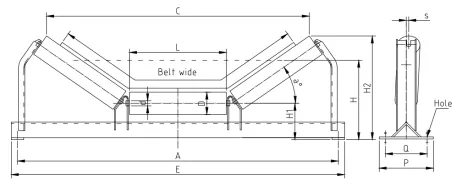 Afrikaans
Afrikaans  Albanian
Albanian  Amharic
Amharic  Arabic
Arabic  Armenian
Armenian  Azerbaijani
Azerbaijani  Basque
Basque  Belarusian
Belarusian  Bengali
Bengali  Bosnian
Bosnian  Bulgarian
Bulgarian  Catalan
Catalan  Cebuano
Cebuano  Corsican
Corsican  Croatian
Croatian  Czech
Czech  Danish
Danish  Dutch
Dutch  English
English  Esperanto
Esperanto  Estonian
Estonian  Finnish
Finnish  French
French  Frisian
Frisian  Galician
Galician  Georgian
Georgian  German
German  Greek
Greek  Gujarati
Gujarati  Haitian Creole
Haitian Creole  hausa
hausa  hawaiian
hawaiian  Hebrew
Hebrew  Hindi
Hindi  Miao
Miao  Hungarian
Hungarian  Icelandic
Icelandic  igbo
igbo  Indonesian
Indonesian  irish
irish  Italian
Italian  Japanese
Japanese  Javanese
Javanese  Kannada
Kannada  kazakh
kazakh  Khmer
Khmer  Rwandese
Rwandese  Korean
Korean  Kurdish
Kurdish  Kyrgyz
Kyrgyz  Lao
Lao  Latin
Latin  Latvian
Latvian  Lithuanian
Lithuanian  Luxembourgish
Luxembourgish  Macedonian
Macedonian  Malgashi
Malgashi  Malay
Malay  Malayalam
Malayalam  Maltese
Maltese  Maori
Maori  Marathi
Marathi  Mongolian
Mongolian  Myanmar
Myanmar  Nepali
Nepali  Norwegian
Norwegian  Norwegian
Norwegian  Occitan
Occitan  Pashto
Pashto  Persian
Persian  Polish
Polish  Portuguese
Portuguese  Punjabi
Punjabi  Romanian
Romanian  Russian
Russian  Samoan
Samoan  Scottish Gaelic
Scottish Gaelic  Serbian
Serbian  Sesotho
Sesotho  Shona
Shona  Sindhi
Sindhi  Sinhala
Sinhala  Slovak
Slovak  Slovenian
Slovenian  Somali
Somali  Spanish
Spanish  Sundanese
Sundanese  Swahili
Swahili  Swedish
Swedish  Tagalog
Tagalog  Tajik
Tajik  Tamil
Tamil  Tatar
Tatar  Telugu
Telugu  Thai
Thai  Turkish
Turkish  Turkmen
Turkmen  Ukrainian
Ukrainian  Urdu
Urdu  Uighur
Uighur  Uzbek
Uzbek  Vietnamese
Vietnamese  Welsh
Welsh  Bantu
Bantu  Yiddish
Yiddish  Yoruba
Yoruba  Zulu
Zulu Innovative Solutions for Efficient Belt Scraper Design and Implementation
The Role and Importance of Belt Scrapers in Material Handling
Belt scrapers play a crucial role in the operation of conveyor systems, particularly in industries such as mining, agriculture, and manufacturing. These devices, usually positioned at the discharge end of a conveyor belt, are essential for maintaining efficiency and cleanliness in bulk material handling processes. By effectively removing residual material from the conveyor belt, belt scrapers ensure that the systems function smoothly and reduce the risk of contamination or buildup that can lead to costly downtime.
Understanding Belt Scrapers
A belt scraper, also referred to as a belt cleaning system, comprises a blade or series of blades that scrape the surface of the conveyor belt as it moves. The most common types of belt scrapers can be classified into two categories primary and secondary scrapers.
1. Primary Scrapers Often the first line of defense against material buildup, these scrapers are designed to remove a significant portion of the carryback material. They typically use a fixed or adjustable blade that contacts the belt at a predetermined angle, allowing them to effectively remove excess materials without damaging the belt.
2. Secondary Scrapers Positioned after the primary scraper, these devices provide an additional cleaning layer to capture any remaining residue. Often made of softer materials like polyurethane, secondary scrapers ensure that the belt is as clean as possible before it returns to the loading zone.
Benefits of Using Belt Scrapers
The advantages of incorporating belt scrapers in conveyor systems are manifold
- Increased Efficiency By minimizing carryback, belt scrapers enhance the overall efficiency of the conveyor system. A cleaner belt allows for smoother material flow, which can lead to increased throughput and reduced energy consumption.
belt scraper

- Reduced Maintenance Costs Conveyor systems that operate with carryback often face increased wear and tear. Regularly cleaning the belt minimizes damage to the conveyor, reducing the need for repairs and extending the lifespan of both the belt and the conveyor components.
- Environmental Compliance In many industries, regulatory standards require companies to manage waste and prevent spillage. Belt scrapers help companies comply with these regulations by reducing the amount of material that is left uncollected, thus minimizing the environmental impact of their operations.
- Improved Safety Carryback presents a significant hazard as it can lead to slippery surfaces around conveyor systems, creating unsafe working conditions for employees. By effectively managing material transfer, belt scrapers contribute to a safer work environment.
Maintenance Considerations
Proper maintenance of belt scrapers is essential for ensuring their effectiveness. Routine inspections should be conducted to check for wear and tear on the blades and adjust their positioning as necessary. Operators should also be attentive to the accumulation of material on the conveyor system, as excessive buildup can lead to increased stress on the scraper blades and the conveyor itself.
Furthermore, selecting the right type of scraper for specific applications is crucial. Factors such as the type of material being handled, operating conditions, and the design of the conveyor system will dictate the best scraper choice.
Conclusion
Belt scrapers are often an overlooked yet vital component of conveyor systems. Their role in maintaining efficiency, reducing maintenance costs, ensuring environmental compliance, and enhancing workplace safety cannot be understated. As industries continue to evolve and expand, the need for reliable material handling solutions, including effective belt cleaning systems, will become even more pressing. Investing in high-quality belt scrapers tailored to specific operational needs can lead to significant long-term benefits for companies, impacting everything from productivity to profitability. As we advance toward more automated and efficient systems, belt scrapers will remain integral to the success of material handling operations across various sectors.
-
Revolutionizing Conveyor Reliability with Advanced Rubber Lagging PulleysNewsJul.22,2025
-
Powering Precision and Durability with Expert Manufacturers of Conveyor ComponentsNewsJul.22,2025
-
Optimizing Conveyor Systems with Advanced Conveyor AccessoriesNewsJul.22,2025
-
Maximize Conveyor Efficiency with Quality Conveyor Idler PulleysNewsJul.22,2025
-
Future-Proof Your Conveyor System with High-Performance Polyurethane RollerNewsJul.22,2025
-
Driving Efficiency Forward with Quality Idlers and RollersNewsJul.22,2025





























